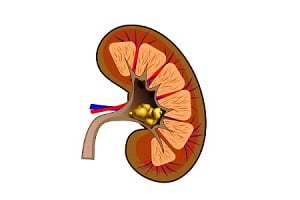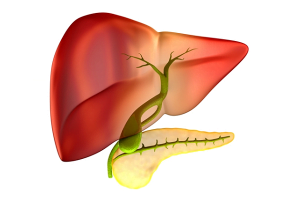Acute bronchitis is a viral illness that spreads easily and affects the lower respiratory tract, especially the tubes known as the bronchial tubes, which are big airways that cause inflammation and increased mucus production. Breathing problems arise from this inflammation’s restriction of the lungs’ airways. Acute bronchitis symptoms usually last for a brief period of time.
While acute bronchitis is usually linked to the winter season, it can happen at any time of the year. Elderly people, infants, and small children are the groups most vulnerable to chest infections. People can develop bronchitis for a variety of reasons, such as smoking, having pre-existing lung diseases, being exposed to air pollution, and being irritated.
What are the Causes and Risk Factors of the Condition?
Acute bronchitis is mostly caused by viruses, which are usually the same viruses that cause influenza and common colds. On the other hand, bacterial infections may also cause this illness. Acute bronchitis can also result from exposure to chemical or physical substances found in the environment. Dust, allergies, and strong odors—like those from cleaning chemicals or tobacco smoke—can all be considered among these factors.
After a viral upper respiratory tract infection, such as the common cold, acute bronchitis frequently ensues. Acute bronchitis may also be more likely to occur in people who already have chronic sinusitis, allergies, enlarged tonsils and adenoids, or other pre-existing diseases. Notably, people who already have heart or lung issues are at higher risk since acute bronchitis can make them worse. Complications such as pneumonia could occur.
There are a number of known risk factors that can increase a person’s likelihood of getting acute bronchitis. Among these are:
- A past smoking habit or frequent exposure to smoke from others.
- Prior diagnosis of asthma or allergies.
- A weakened immune system brought on by drugs or medical disorders.
- Living or working in areas where air pollution is a major concern.
- Exposure to particular chemicals or contaminants at work.
- Episodes of respiratory infections on repeat.
Causes of Acute Bronchitis
Usually, exposure to infectious viruses—often the same ones that cause colds—causes acute bronchitis. These viruses first affect the throat, sinuses, and nasal passages before moving on to the linings of the bronchial tubes. The body produces mucus and swells as a result of inflammation brought on by viral invasion. The immune system’s attempts to fight the viral infection are reflected in this process.
Viral Infection
Every year, 5% of adults report having an episode of acute bronchitis; most of them—up to 90%—seek medical attention. Up to 95% of occurrences of acute bronchitis in otherwise healthy persons are primarily caused by viral infections. These viruses are similar to the ones that cause the common cold to start.
The viral infection can cause inflammation that narrows the airways, making it more difficult for air to travel easily through the bronchial tubes. As a result, people could feel as though they are out of breath and that their chest is constricted. Furthermore, the infection can cause an excess of mucus to be produced, which would cause a chronic cough and chest pain.
A secondary bacterial infection may arise as a result of a viral infection in specific cases. These bacteria have the ability to enter the bronchial airways, increasing mucus production and inflammation, which exacerbates acute bronchitis symptoms.
After exposure, symptoms of acute bronchitis caused by a viral infection usually appear one to three days later and might last for several weeks. They frequently resemble those of a typical cold or influenza, including coughing, chest pain, dyspnea, and moderate fever, and bodily soreness.
Common Viruses That Can Cause Acute Bronchitis
Acute bronchitis, which is characterized by inflammation of the bronchial tubes, is known to be caused by common viruses. Comprehending these viruses is essential to accurately identifying and treating the symptoms. The following are the main viruses linked to acute bronchitis:
Rhinovirus: Frequently associated with the common cold, rhinovirus is responsible for a considerable proportion of instances of acute bronchitis because it can inflame the respiratory system.
Coronavirus: The coronavirus strain that caused the COVID-19 pandemic is notable for its ability to cause acute bronchitis, which can occasionally result in serious respiratory difficulties. This emphasizes the significance of taking protective measures.
Influenza virus: Known to cause seasonal flu, influenza viruses can also cause acute bronchitis, especially when there is an outbreak of the virus.
The parainfluenza virus: Typically responsible for upper respiratory tract infections, this virus can progress to acute bronchitis, underscoring the connection between respiratory illnesses.
Adenovirus: Although mostly affecting the upper respiratory tract, infections with adenoviruses can spread to the bronchial tubes and cause severe bronchitis, especially in youngsters.
RSV, or respiratory syncytial virus: RSV is known to mostly affect young children and is linked to pneumonia and bronchiolitis. All age groups should pay attention to it, though, since it can also present as acute bronchitis in adults.
Common Bacterial Infections That Can Cause Acute Bronchitis
Acute bronchitis is mostly caused by viral infections, but in some situations, bacterial infections may also play a potentially significant role. Secondary bacterial infections can occur in the bronchial tubes when they expand and become inflamed from a viral infection.
Pneumococcus pneumoniae, sometimes known as Streptococcus pneumoniae, is the most common culprit among the bacteria that cause pneumonia and is also linked to bronchitis. Moraxella catarrhalis and Haemophilus influenzae are two other bacterial strains that can cause acute bronchitis. When bacterial infections cause acute bronchitis, antibiotics are usually the first line of treatment.
The signs and symptoms of bacterial infections that cause acute bronchitis are similar to those of viral infections and include coughing, chest pain, and mucus production. However, symptoms brought on by bacteria could appear more severely and last longer. A subsequent bacterial infection may be indicated by thicker, yellow, or green sputum, higher temperature, and chills in patients with bacterial-induced acute bronchitis.
Typical Bacteria Linked to Acute Bronchitis
Usually caused by a viral respiratory infection, acute bronchitis can occasionally lead to bacterial problems. The following are some of the bacteria that are at fault in this situation:
- Pneumococcus, sometimes referred to as streptococcus pneumoniae, is a common bacteria that often causes pneumonia and can also cause acute bronchitis.
- Haemophilus influenzae: renowned for its ability to cause a wide range of diseases, such as meningitis, pneumonia, and acute bronchitis.
- Frequently linked to respiratory illnesses, such as acute bronchitis, is Moraxella catarrhalis.
- Although it is well known for causing sepsis and pneumonia, Staphylococcus aureus can also cause acute bronchitis as a secondary infection.
- Known to cause pneumonia in most cases, Klebsiella pneumoniae can also induce acute bronchitis as a secondary infection.
- Known to cause atypical pneumonia, Mycoplasma pneumoniae can also cause acute bronchitis.
It is important to understand that viral infections are the primary cause of acute bronchitis in the majority of instances, with bacterial involvement acting as a secondary cause. Antibiotics are therefore frequently unnecessary. It’s important to speak with a healthcare professional to determine whether antibiotics are necessary and to follow the directions on the label.
Environmental Factors for Acute Bronchitis
Numerous factors affect acute bronchitis, a disorder characterized by inflammation of the bronchial tubes. These include having smoked in the past, living in a crowded place, being near a lot of pollution, and having had asthma in the past. Furthermore, for those who are sensitive, certain allergens including pollen, perfume, and fumes might cause acute bronchitis.
Gaining the public’s awareness and encouraging preventive actions requires an understanding of these risk factors. People can lower their risk of acute bronchitis by being proactive and understanding the influence of lifestyle decisions, environmental factors, and personal sensitivities.
Air Pollution
It is well known that acute bronchitis is significantly influenced by air pollution. Long-term exposure to air pollution can aggravate and inflame the bronchial tubes, making this respiratory disease more likely to occur.
Many air contaminants, including nitrogen oxides, sulfur dioxide, and particulate matter, can cause inflammation in the respiratory system, which can lead to the development of acute bronchitis. People who live in cities or work in certain sectors frequently come into contact with high levels of air pollution, which makes them more susceptible to this illness.
A large body of research highlights the link between elevated air pollution levels and respiratory illnesses, such as acute bronchitis. Moreover, workers in industries like mining, construction, and manufacturing are often exposed to elevated concentrations of air pollutants, which increases their chance of contracting acute bronchitis.
It is critical that the general population understands the possible negative effects of extended exposure to air pollution on health, especially with regard to respiratory conditions. By making people aware of the connection between bronchial health and air quality, people can take preventative action to reduce their exposure to pollutants and protect their respiratory health.
Second-Hand Smoke
Among the most common causes of acute bronchitis include smoking and being around second-hand smoke. These actions cause irritation and damage to the mucous lining of the airways, which in turn causes inflammation and an excess of mucus to be produced. As a result, people have a chronic cough, respiratory problems, and pain, all of which considerably lower their general quality of life.
Giving up smoking can have a significant positive impact on lowering the frequency and severity of acute bronchitis episodes. When people refrain from using tobacco, their lungs have the chance to heal and function better, which reduces coughing and enhances respiratory health. Avoiding second-hand smoking is also crucial because it can irritate the airways and cause bronchitis even in non-smokers.
Minimize interaction with second-hand smoke wherever possible to reduce the risk of getting acute bronchitis from second-hand smoke exposure. This involves avoiding close contact with smokers and enforcing a strong no-smoking policy in both residential and mobile spaces. Furthermore, it is advisable for persons to familiarize themselves with relevant laws that pertain to smoking in public areas within their respective jurisdictions. Many cities and states have passed laws making it illegal to smoke indoors in certain places, such as restaurants and workplaces. Knowing these regulations is one of the most important ways to protect yourself from the harmful consequences of second-hand smoke.
Occupational Exposure to Chemicals and Irritants
There is a connection between work exposure to several chemicals and irritants and the development of acute bronchitis. Some occupations, particularly those in the mining, construction, and manufacturing industries, are particularly dangerous because of the high concentrations of chemicals and allergens that these settings contain. These drugs have the ability to irritate and inflame the bronchial tubes, which can cause bronchitis.
Chemicals that irritate the bronchial passages and cause acute bronchitis are the main culprits, including dust, fumes, and vapours. People who work in construction and mining, for example, are frequently exposed to dust and other particulate matter, which can irritate the lungs and lead to bronchitis. Similarly, workers in the manufacturing and associated industries may be exposed to vapours and fumes from different chemicals, which aggravates bronchial irritation.
The symptoms of acute bronchitis, which are caused by exposure to chemicals and irritants in the workplace, include chest pain, prolonged coughing, and dyspnea. Given their propensity for persistence and length, it is imperative to differentiate these symptoms from those of bacterial or viral illnesses.
The mainstay of reducing the risk of acute bronchitis from occupational exposure is prevention. Employers are critical in ensuring the safety of their employees by putting in place a number of preventive measures:
- Improving Airflow and Filtration: Setting up appropriate airflow and filtration systems helps reduce exposure to allergens in the work environment.
- Using Personal Protective Equipment (PPE): Providing workers with protective goggles, gloves, masks, and other essentials adds another line of defense against hazardous materials.
- Establishing Routine Air Quality Monitoring: This allows for the timely detection and mitigation of possible dangers. It involves routinely evaluating the chemical and air quality levels in the workplace.
- Providing Extensive Safety Training: Full training programs guarantee that employees are knowledgeable about safety procedures and skilled in managing hazardous chemicals, which lowers the risk of exposure events.
- Encouraging Frequent Health Examinations: Allowing employees who have been exposed to chemicals and irritants on a regular basis to get medical checkups helps with early symptom diagnosis and timely medical intervention when necessary.
Risk Factors
A number of things can increase your chance of getting bronchitis:
- Cigarette Smoke: Those who smoke or are around smoke have an increased chance of developing acute and chronic bronchitis. This behavior raises the risk of respiratory infections and seriously impairs respiratory health.
- Low Resistance: People who have weakened immune systems are more vulnerable to bronchitis, regardless of whether they are the result of a chronic sickness or an acute illness like a cold. Older folks, newborns, and small children are especially vulnerable.
- Occupational Exposure to Irritants: People who work in certain professions are subjected to fumes from chemicals as well as dust from grains or fabrics. Extended exposure to these irritants may increase the risk of bronchitis.
- Gastric reflux: Prolonged bouts of intense heartburn can irritate the throat, making people more prone to bronchitis.
- Chronic Obstructive Pulmonary Disease (COPD): Even though a single case of bronchitis usually doesn’t mean much, it still needs to be taken seriously because in certain cases, it can progress to pneumonia. On the other hand, repeated episodes of bronchitis could indicate that chronic obstructive pulmonary disease (COPD) is present. This emphasizes how crucial it is to identify the possible course of respiratory conditions and seek the proper medical attention for diagnosis and treatment.
People can prioritize respiratory health and reduce their risk of bronchitis by being aware of these risk factors and taking proactive efforts to reduce it. To lower the risk of developing bronchitis, it’s imperative to prevent smoking, minimize exposure to second-hand smoke, lead a healthy lifestyle that strengthens the immune system, use protective gear while working in jobs that expose workers to airborne contaminants, and properly manage reflux disease.
References
DiseaseFix has strict sourcing guidelines and relies on peer-reviewed studies, academic research institutions, and medical associations. We avoid using tertiary references.
Acute Bronchitis
https://www.ncbi.nlm.nih.gov/books/NBK448067/
Acute bronchitis
https://www.ncbi.nlm.nih.gov/pmc/articles/PMC2278319/
Quality assessment in general practice: diagnosis and antibiotic treatment of acute respiratory tract infections
https://www.ncbi.nlm.nih.gov/pmc/articles/PMC6381521/





